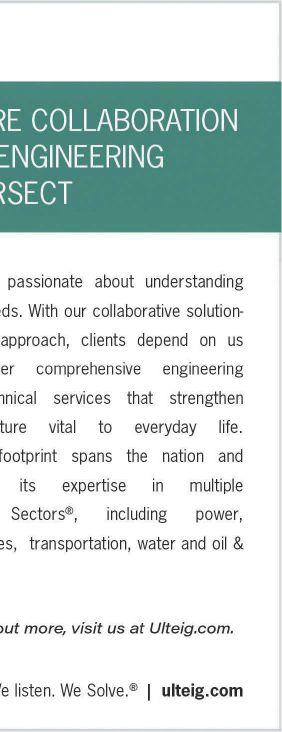
2 minute read
Sexual harassment
How to protect your employees and your company
By Heather Springer
SIOUX FALLS, S.D. – The topic of sexual harassment is everywhere right now. This increased focus began far from South Dakota, but it is raising the awareness of employers everywhere.
In fact, in the recent case of Laura Zylstra Kaiser v. Bryan Gortmaker, the director of the South Dakota Division of Criminal Investigation, the jury awarded Kaiser more than $1.2 million on gender discrimination and retaliation claims.
What does this mean for employers? As more people feel enabled to raise concerns, employers would be wise to review whether and how they are protecting their employees, as well as their company.
The following are a few guidelines employers should follow to ensure they are preparing their own workplaces:
1. Examine your culture
As an employer, it is vital for you to consistently monitor your workplace and communicate with employees, including managers, regarding the work environment.
By engaging in a proactive approach, you will be able to better identify, prevent and respond to potential or existing issues.
A key question is not just whether there is a culture of compliance, but also whether it reaches to the top of the organizational chart. Specifically, do workers perceive that C-suite or other very important employees have a different set of rules than the regular employees do?
2. Review your policies
Make sure you have sufficient anti-harassment policies. At a minimum, such policies should:
(1) prohibit harassment and discrimination
(2) provide procedures for reporting harassment
(3) identify procedures for investigating complaints
(4) address discipline for policy violations
(5) prohibit retaliation against employees who report harassment or discrimination in good faith.
The deeper question, however, is whether your policies translate into actual protections for employees. Some employers make significant distinctions between formal and informal complaints and make the complaint process overly burdensome for employees. In effect, these employers discourage complaints, particularly against top-level employees.
Therefore, it is crucial to ensure your employees are protected both through the complaint process and from retaliation, as an employee’s fear often prevents that employee from raising concerns about someone with greater clout in the organization.
3. Train your employees
You should provide general training to employees regarding your employment policies and procedures, and you should encourage employees to report any misconduct they experience or observe.
4. Train your managers
In general, the actions of managers are attributable to their employers and can give rise to employer liability. Moreover, managers are responsible for both their own actions and the actions of the employees they supervise.
Therefore, the importance of training your managers to identify and respond to allegations of harassment and discrimination cannot be overstated. All managers – especially high-level employees – should be routinely trained on policies and procedures for responding to complaints.
5. Follow your procedures
Upon receipt of an employee complaint, do not overreact. Given the current climate, some employers feel the need to proceed with immediate termination or other forms of adverse action. Instead, you should follow your normal investigation procedures and fully investigate any complaint before taking adverse action.
You should also, however, very carefully protect any employee who files a complaint.
As demonstrated in recent months, no workplace or industry is immune from allegations of harassment or misconduct. For employers, the primary goal is to train employees in order to reduce incidents of harassment or misconduct in the workplace. However, employers still need to be prepared to respond to such allegations if and when they arise.

Keeping the foregoing guidelines in mind provides a starting point for employers in preparing for and responding to complaints.
With the largest team of employment lawyers in South Dakota, Woods, Fuller, Shultz & Smith P.C. assists employers with training and preparation to reduce the risk of harassment and properly respond in the event of a complaint. PB

Heather Springer EMPLOYMENT LAW ATTORNEY WOODS, FULLER, SHULTZ AND SMITH P.C. SIOUX FALLS, S.D. HEATHER.SPRINGER@WOODSFULLER.COM













